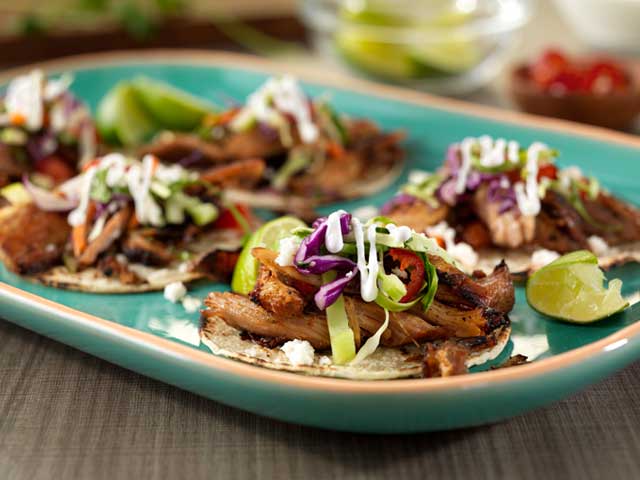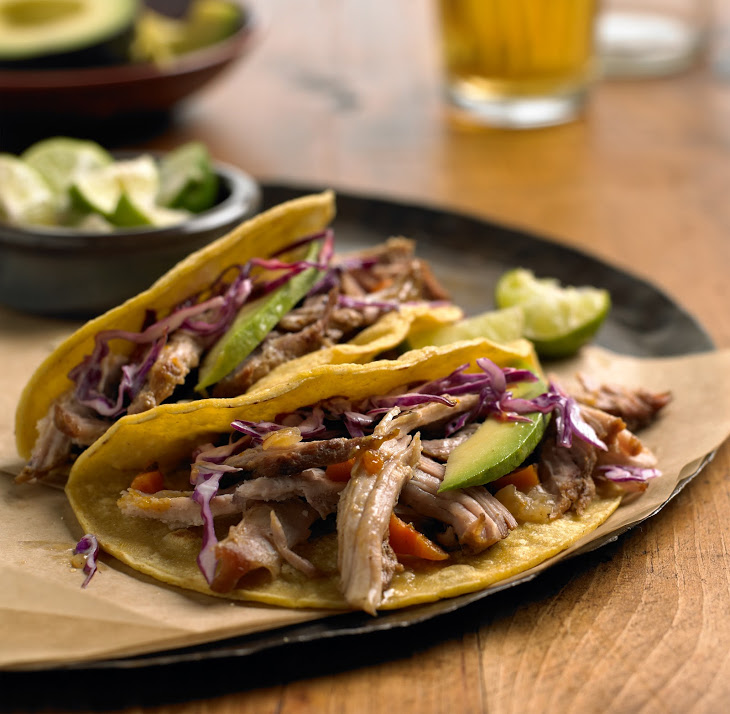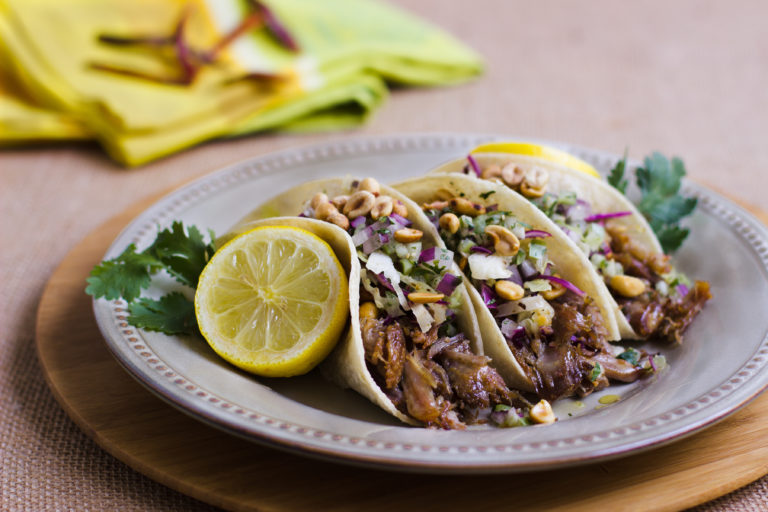One of the staples of Mexican cuisine is the slow-cooked pork dish that originated in the state of Michoacán, known as carnitas.
The traditional method of preparation calls for braising a pork shoulder in lard until tender, much in the same way the French make confit, in which duck or chicken is simmered in duck fat until tender.
The literal translation of the word carnitas is “little meats.” The preferred cut for authentic carnitas is well-marbled pork shoulder, or Boston butt, which is cut into largish chunks of about 2 inches.

Photo courtesy of Pork Checkoff. For more information about pork, visit pork.org.
Carnitas: The Traditional Way
In the traditional recipe, the pork cubes are simmered on low heat (about 200°) in a copper cauldron for several hours until tender. Then, the heat is turned up and the outside of the pork chunks begins to crisp. Alternatively, the tender chunks can be crisped in a frying pan before serving.
Typical flavorings and seasonings include oregano, cumin, salt, bay leaf, garlic, and orange rind and juice.
Serving Carnitas
Finally, the chunks are pulled or shredded, in much the same fashion as Southern U.S.-style pulled pork.

Photo courtesy of Pork Checkoff. For more information about pork, visit pork.org.
From there, the applications are endless. The carnitas can be used as filling for tacos, burritos, enchiladas, tamales, tortas, soups, and so much more. Typical accompaniments include chopped cilantro, salsa or pico de gallo, and guacamole.

Photo courtesy of Pork Checkoff. For more information about pork, visit pork.org.
How to Make Carnitas
In actuality, it is not easy finding a truly authentic carnitas recipe that cooks the pork in lard, but variations and adaptations abound to make the process more home-kitchen friendly, including simmering in water rather than lard and variations for cooking in a slow cooker.
Simply search the Internet and you’ll find a spectrum of recipe options best suited for your style of preparation.
However, if authenticity is a key criteria for you, try following this recipe.
Have you ever made carnitas? What method of preparation did you use? What flavorings did you choose to make it your own?



Leave Your Response